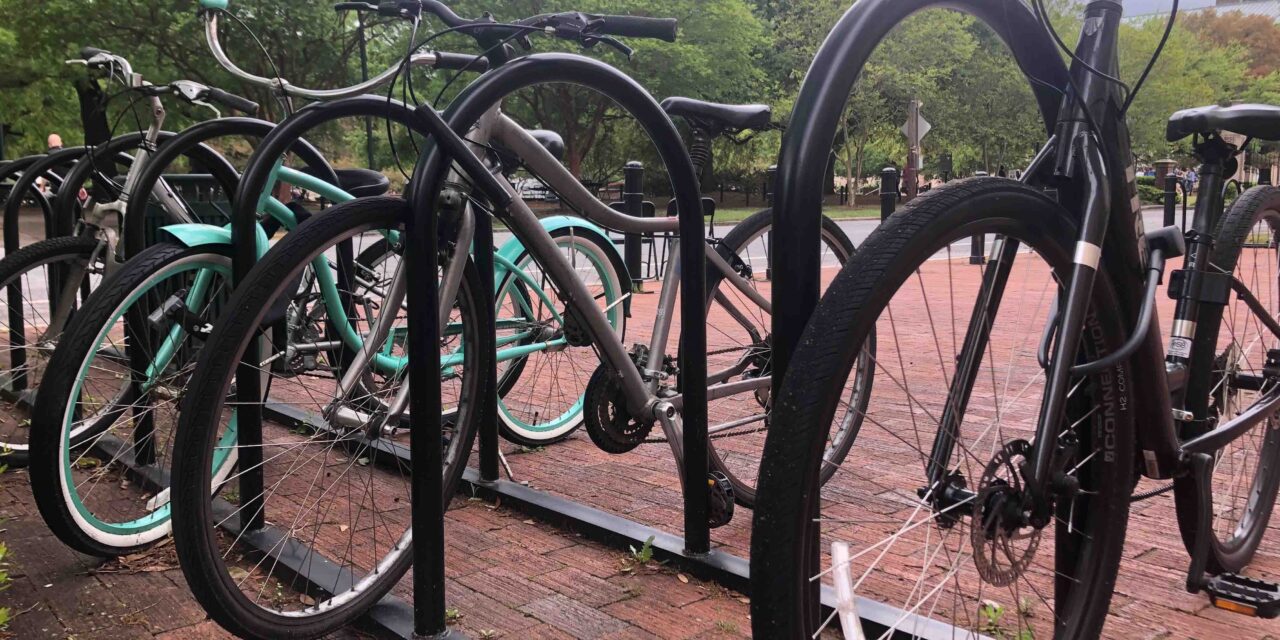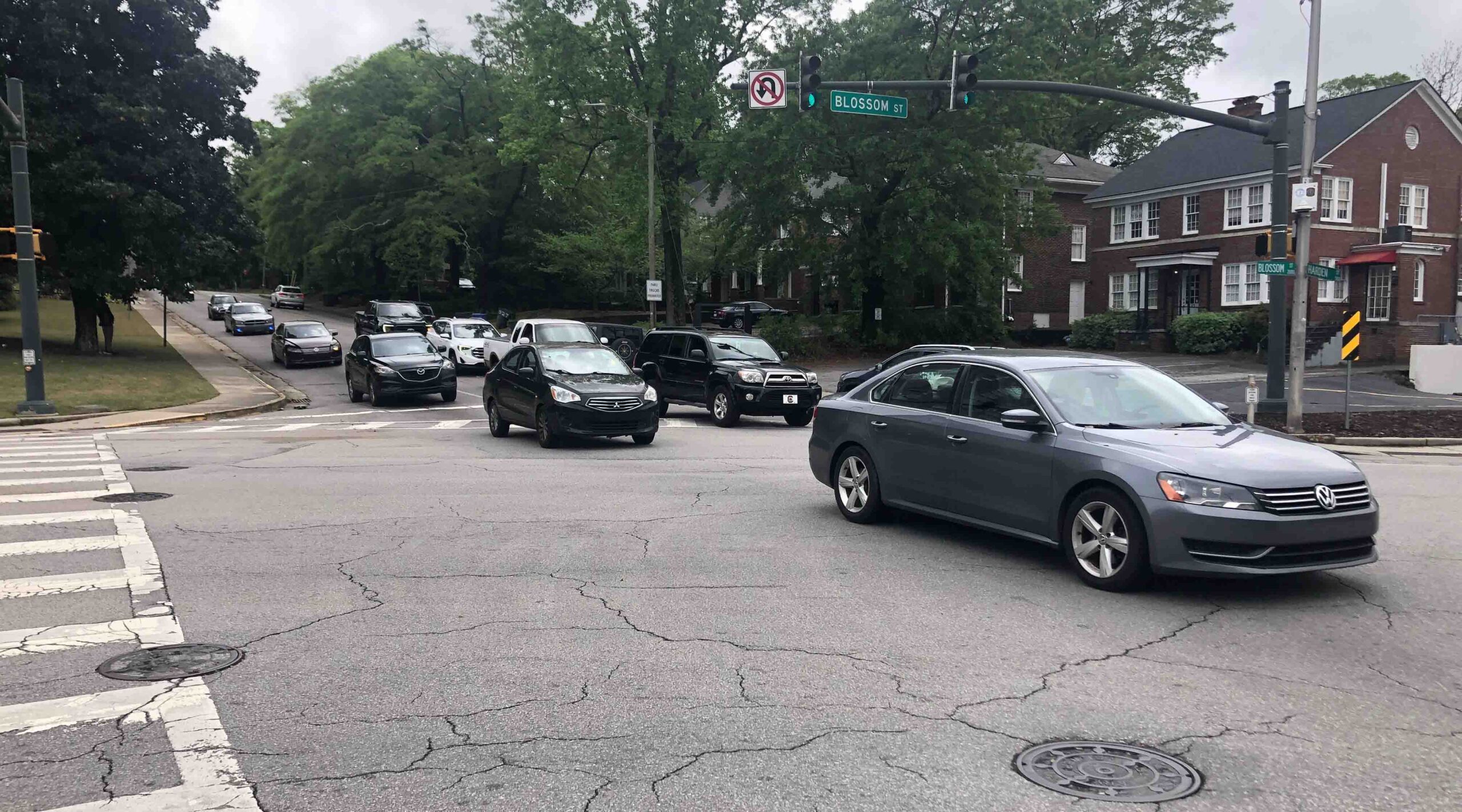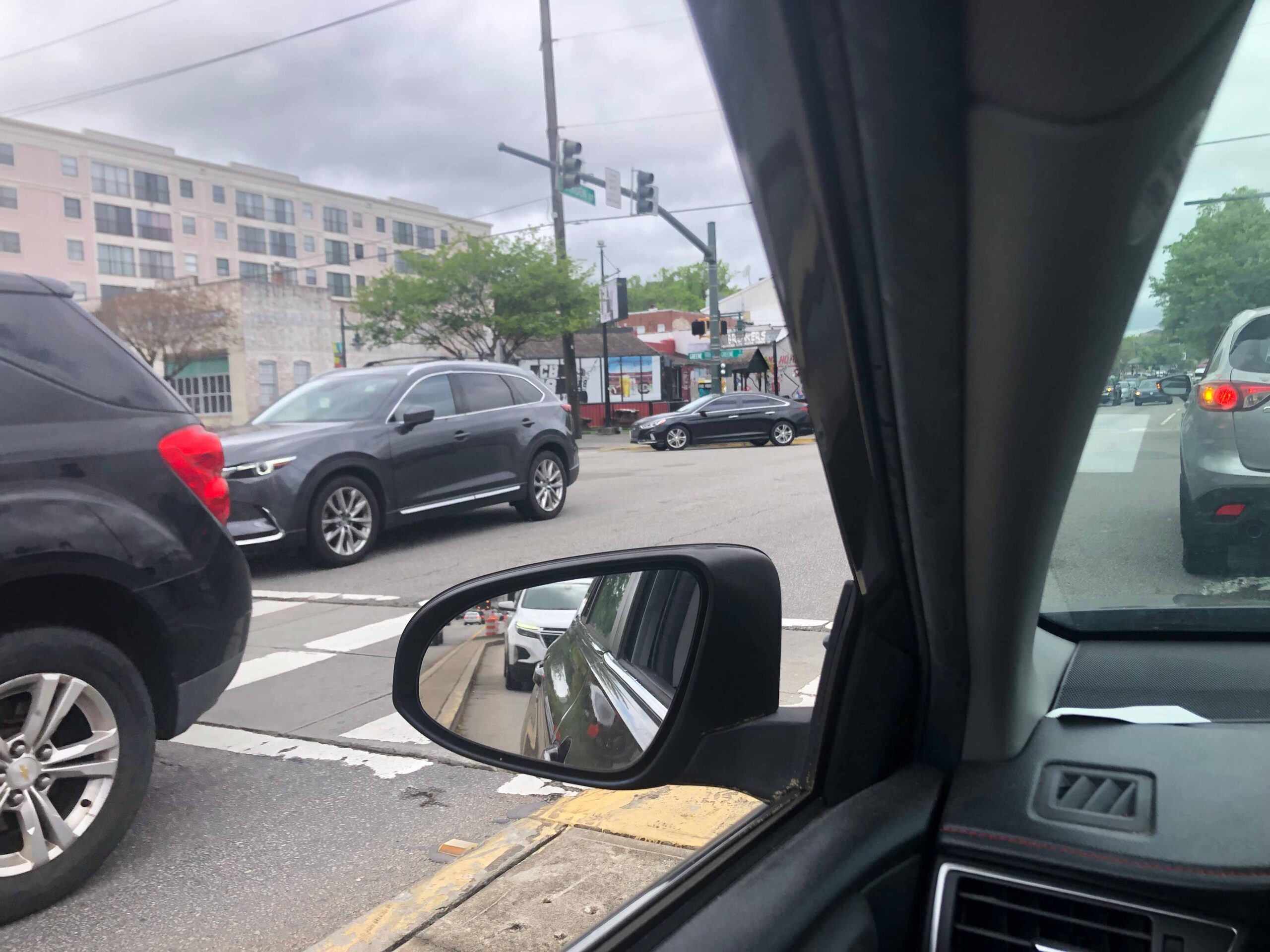People are encouraged to ride bikes, walk or take public transit to lessen cars’ impact on the environment. (Photo by Amanda Petty/Carolina News and Reporter)
Columbia was one of the worst cities for transportation-related emissions last year, a new study reveals.
The 2024 U.S. Transportation Climate Impact Index measured 100 of the most populous metros in the United States, and Columbia came in with one of the worst scores, at 98.
The 29-page report evaluated cities on eight critical inputs for June 2022 to May 2023: vehicle miles traveled, fuel economy, transit ridership, electric vehicle penetration, bicycle activity, pedestrian activity, truck miles traveled and change in vehicle miles traveled.
Streetlight, a transportation data analysis agency, is behind the study. Streetlight’s director of content, Emily Adler, said Streetlight’s mission is to better understand how transportation contributes to U.S. emissions to help bring them down.
The purpose of the report is to give metro areas the opportunity to see where exactly they can improve across the eight metrics.
“So, really understanding the nuts and bolts of what’s driving those emissions enables you to be able to bring them down,” Adler said.
The report notes three big trends that affect the climate now in transportation. The first is that vehicle miles traveled bounced back as people started driving again post-COVID pandemic. The report factored in the change in vehicle miles traveled to show “how metros are doing at reining in vehicle travel.”
The second trend was an increase in biking activity, but a decrease in pedestrian activity post-pandemic. In the report, biking is weighted above walking because biking can replace short vehicle trips.
The third trend is that electric vehicle penetration has been relatively slow-growing. The more electric vehicles and the better their fuel efficiency, the more limited the greenhouse gas emissions are for each mile traveled.
Columbia was graded at 95 for vehicle miles traveled, 87 for transit ridership, 90 for electric vehicle penetration, 95 for biking activity, 73 for pedestrian activity, 80 for truck miles traveled and 80 for change in vehicle miles traveled.
But all these factors are not weighted the same. Vehicle miles traveled is weighted the highest because it is “the most significant topline contributor to a metro’s emissions,” according to the report.
Dr. Sicheng Wang is an assistant professor in the University of South Carolina’s geography department. His research focuses on transportation accessibility and policies related to transportation equity and emerging technologies in the field.
Wang said among the eight factors, vehicle miles traveled affects Columbia the most because it is the fastest-growing city and metro area in South Carolina.
“All these suburban areas, they are developing,” Wang said. “The city area or urban area become bigger and bigger. So that means people travel a lot.”
Columbia scored 95 for biking activity and 73 for pedestrian activity. Wang said this is because the Midlands isn’t pedestrian or bicycle friendly because of Columbia’s hilly terrain and lack of bicycle-friendly roads.
“People cannot really access many areas by biking, so if you’re living near by downtown, probably you can,” he said. “… But if you cross the river, living in Cayce, it’s hard to bike.”
Columbia scored 87 for transit ridership, which measures public transit accessibility. Wang said Columbia scored low because the city’s limited transit system cannot support its large population.
Columbia scored 90 for electric vehicle penetration. Wang said this is because South Carolina is slow to encourage the use of electric vehicles compared to states such as California, where there are more incentives to use electric vehicles. The top five U.S. metros that have the most electric vehicles are all in California.
But Wang said we need more electric vehicles so we can lower greenhouse gas emissions. In addition to more electric vehicles, Wang said Columbia needs to invest and expand its public transit system.
“If we also consider (building) more reliable and more affordable bus system or other transit system, that will attract people to the transit instead of driving,” he said.
He said Columbia also needs to build more sidewalks and bike lanes and to build grocery stores and other points of interest closer together.
“(People) don’t walk or bike for no reason, right?” Wang said. “So they need a destination. And also, another factor when you’re thinking about biking or walking, safety is an issue. The safety and security in the urban area in downtown – that should be maintained.”
Mary Pat Baldauf, the city’s sustainability facilitator, wishes Columbia had done better. But she thinks the study is “comparing apples to oranges.”
“New York City is very different from Columbia, South Carolina,” Baldauf said. “They were applying the same standards from out the gate from a metropolis to a small rural town.”
She said this is because they were surveying bigger cities with strong tax bases and great infrastructure to smaller towns that do not have the same amenities, especially in the Southeast.
“I think if you looked at the Columbia from 20 years ago to Columbia today, I think you would see lots of changes and reflect more than the number 98,” she said.
Baldauf said she doesn’t think the study is an accurate view of what different metros have done.
But Streetlight’s Adler said the report is an opportunity for cities to see where they can make investments to mitigate climate impact and to show them relative to their peers.
Wang said if Columbia doesn’t take steps to mitigate these effects and raise awareness, the city will keep growing and there will be more traffic.
“I think the institutional support from state, from federal” is important,” he said. “And they also need more money. But I think that the awareness or consciousness is very important.”
The 100 largest U.S. cities rated on their greenhouse gas emissions coming from transportation. (Map courtesy of Streetlight/Carolina News and Reporter)
Long commutes and frequent car trips are among the biggest contributors to greenhouse gas emissions in Columbia, according to a recent survey. (Photo by Amanda Petty/Carolina News and Reporter)
Because Columbia is spread out, residents are more likely to have to drive everywhere. (Photo by Amanda Petty/Carolina News and Reporter)





